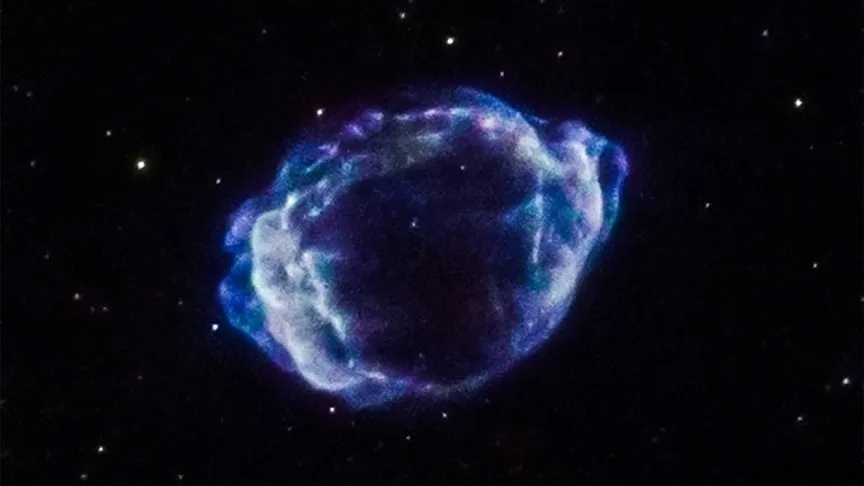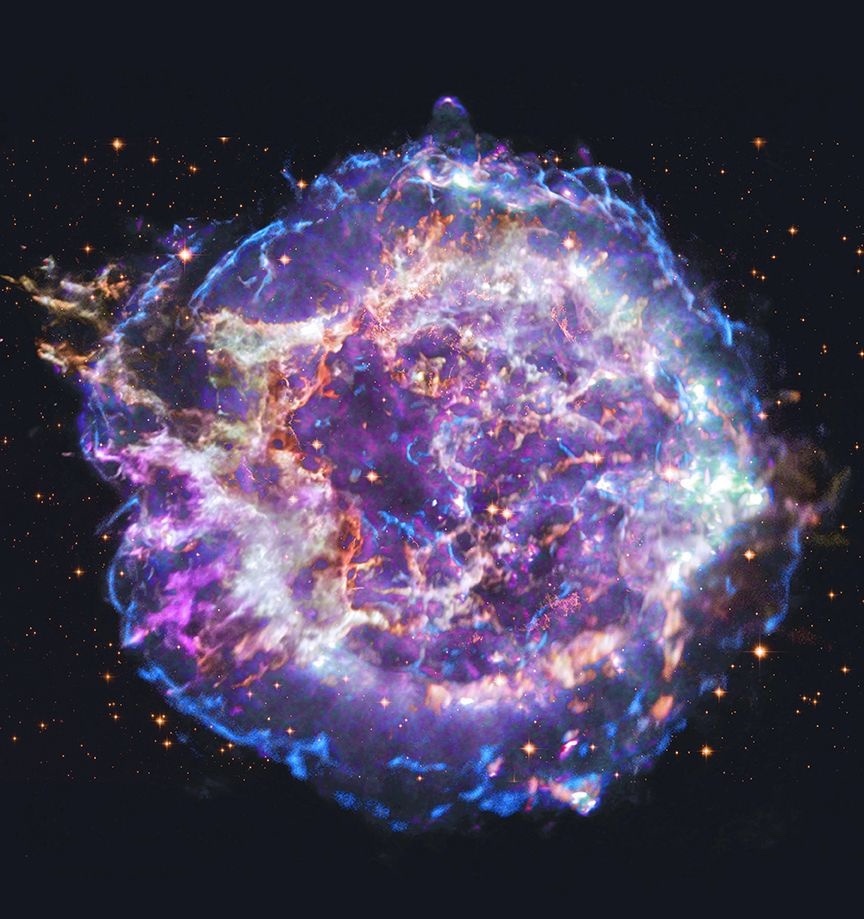6.09.2023
Less than half the predicted number of supernova remnants in our galaxy have been found – where are all the others?

G1.9+0.3, which is the youngest known supernova remnant in our galaxy. (Image credit: NASA/CXC/CfA/S. Chakraborti et al.)
A new search for supernova remnants in our galaxy is underway. Scientists are with aiming to find hundreds of these star explosion remains scattered across the Milky Way by using radio observations captured with the Very Large Array (VLA) in New Mexico and the MeerKAT array of radio telescopes in South Africa.
A supernova is a destructive stellar explosion — either of a massive star at the end of its life or a white dwarf that has accumulated too much stolen matter on its surface taken from a companion star and undergoes a thermonuclear explosion. Either way, the star or white dwarf is blown to smithereens, its guts strewn across space to form a supernova remnant.
This debris contains many heavy elements formed in the violence of the supernova explosion, and at the leading edge of these remnants are shock waves that initially move at perhaps 10 percent of the speed of light. Long after the light of the supernova has faded, this expanding remnant of gas and dust lingers for hundreds of thousands of years, gradually slowing its expansion as it disperses into the interstellar medium.
Between 300 and 400 supernova remnants have so far been found in our Milky Way galaxy. Some of these are sure things, including the Crab Nebula (from a supernova that exploded in 1054), the Veil Nebula (which is older at perhaps 20,000 years), the Vela Supernova Remnant (about 11,000 years old) and the Cassiopeia A supernova remnant which is about 330 years old. The youngest known supernova remnant in our galaxy is G1.9+0.3, which is found in the Milky Way's inner portion and is about 130 years old.
However, observations of other galaxies find that these other realms are home to many more supernova remnants than are known in our galaxy. And based on the number of remnants in those nearby galaxies, astronomers reckon there should be as many as 1,000 in our galaxy, meaning there are likely many still to be discovered.
Now, West Virginia University professor of astronomy, Loren Anderson, is on a hunt for those yet-to-be-found star explosion remains.
"There is a severe discrepancy in the number of supernova remnants we would expect to see compared to the relatively low number we have detected," said Anderson in a statement.
With a grant of $331,170 from the National Science Foundation (NSF), Anderson and WVU graduate student Timothy Faerber will use the VLA and MeerKAT to search for radio emissions stemming from hidden supernova remnants. They plan to employ machine learning as well as the visual inspection of digital sky images to try and distinguish them from other forms of nebulosity in the galaxy, such as star-forming H II regions of molecular hydrogen.
In particular, Anderson and Faerber will direct their search towards the galactic center, where the high density of stars increases the chances of finding recent supernova remnants. Plus, they aim to not only find new remnants, but also to confirm whether objects suspected of being remnants indeed are and to rule out any H II regions that have been misidentified as supernova remnants.

"This study is timely," said Anderson. "Recent data from MeerKAT allow for the most sensitive search for supernova remnants yet, and recent works have identified hundreds of possible supernova remnants that need to be confirmed."
Finding the remnants isn’t just an exercise in cataloging them. They are all important to study. For example, the shape of a remnant and the distribution of its elements can allow astronomers to create 3D simulations depicting how a supernova ejects its debris, how that debris interacts with the interstellar medium and ultimately how the debris ends up in gas clouds that form the next generation of stars and planets.
Quelle: SD

